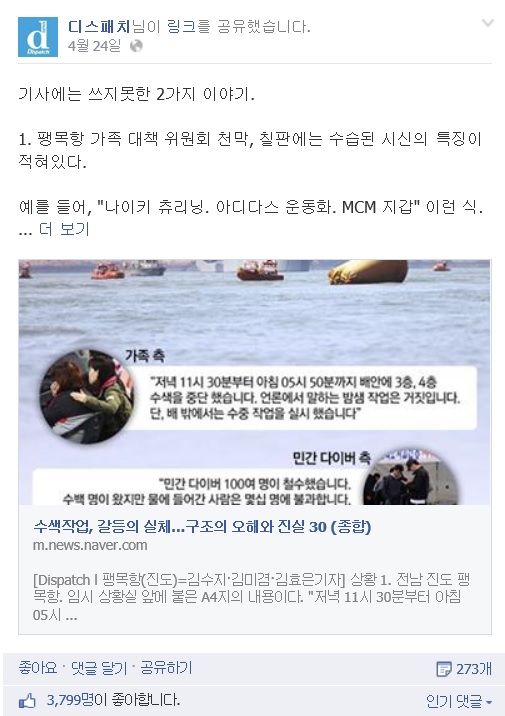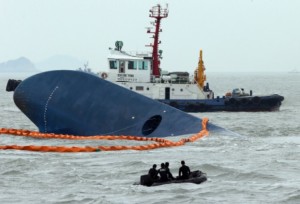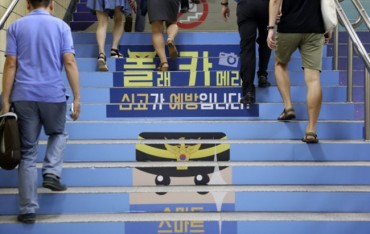
Using influential social media like Facebook, traditional news media’s postings on SNS are recycled through the social media again and again and satisfy SNS users’ curiosity, raising a brighter prospect for new media’s future. (image: mkhmarketing/flickr)
SEOUL, Korea, April 26, 2014 (Korea Bizwire) – While the whole nation is mourning on the tragic sinking of the passenger ferry Sewol, some online users are pouring out malicious comments in the cyber space mostly powered by social networks.
As has always been the case with similar accidents where mostly younger kids do such naughty things online — seemingly devoid of any sense of right or wrong, a downside to social media has emerged where critics say, just “hatred-fanning” words can be as quickly and easily disseminated, making communities a victim to the falsity thanks to the power of social media.
Those nasty and often downright cruel comments this time included “As many students died from the accident, the competition rate for the next year’s university entrance exam will fall as much” and “The bereaved families can leave on an overseas trip with the compensation money,” and on the like.
As the government failed to respond to the accident at the early stage, the words on the social network scene became more and more unsympathetic. Some of the SNS players spread rumors related to the accident and they were circulated to not only SNS users but to the bereaved families and rescue teams.
As their messages were so tactful, the government had to verify the truth of the messages, which paralyzed the leadership of the government conducting the rescue operations.
To prevent any vicious rumors from further spreading on the Internet, the police became active capturing such malicious commenters and as of April 24, it arrested 15 even including an elementary schoolchild.
Positive Side of Social Media
There is, however, a flip side to social media. As the case is almost closing following the continuous recoveries of the bodies in the ferry, there came so many behind stories why the rescue operations were not forthcoming so fast enough.
And some media has succeeded in offering “the right to know” regarding the maritime accident in the form of “Sunken Sewol: Untold Stories.” And they are using influential social media like Facebook and others. Their SNS stories are recycled through the social media again and again and satisfy SNS users’ curiosity.

Dispatch, well known for their exclusive stories on Korean celebs, posted their series of “behind story” on the rescuing activities on its Facebook page, which garnered more than 3,000 “likes” in an instant and aroused an echo in the social media. (image: captured image of Dispatch posting on its Facebook page)
Especially, not that “big” media were very successful in their coverage using SNS in complementary way. Dispatch, well known for their exclusive stories on Korean celebs, posted their series of “behind story” on the rescuing activities with the title “Rescue Works, Reality of Struggles: 30 Truths and Misunderstandings” on its Facebook page, which earned more than 3,000 “likes” in an instant and aroused an echo in the social media.
Also, The Kyonghyang Shinmun, a Seoul-based national daily, posted a link of its story on its Facebook page. The story accusing of the Korea Coast Guard’s bureaucratic manners and easy-going attitude which caused the loss of precious time in the early stage in the eyes of former UDT soldiers, also received huge interests from SNS users.
Conventionally, most news consumers are taking their news from the Internet portals’ news aggregator sections on the fatal accident. But most of the news in the sections are almost identical or have mixed facts, so they arouse confusions among news readers.
That’s why the “untold stories” on SNS channels have come to serve as another sources of “truth-telling” in the midst of false and confusing news are prevailing, providing a rare window into how the media can be able to garner favorable responses from the readers and survive in the rapidly changing media world.
In the meantime, differentiated stories telling the behind stories on the accident through social media tools offer alternative views to the readers and satisfy their right-to-know. As seen in these cases, SNS can play as a complementary news source to the existing media in the news distribution channels and create synergy effects. All said, social media still do matter today and in the future.
Written by John Choi (johnchoi@koreabizwire.com) and Jerry M. Kim (editor@koreabizwire.com)
Technology (Follow us @Technews_Korea)






![[Feature] Jun Ji-hyun and Kim Soo-hyun under Hot Water for Their Commercial Contract [Feature] Jun Ji-hyun and Kim Soo-hyun under Hot Water for Their Commercial Contract](http://koreabizwire.com/wp/wp-content/uploads/2014/06/Jun-Ji-hyun-and-Kim-Soo-hyun-from-My-love-from-the-star-370x236.jpg)
